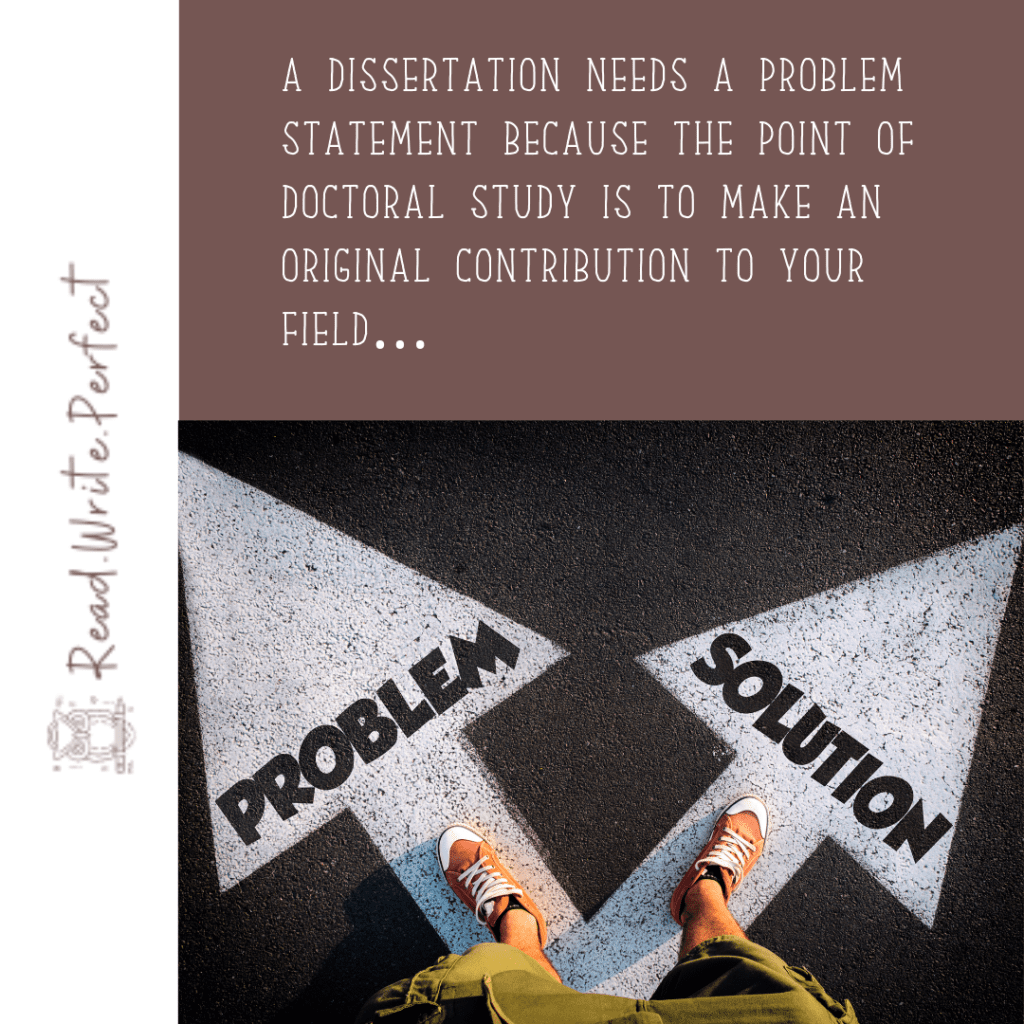
This may seem like a simple concept, but many dissertation students struggle to move from this definition to a fully fleshed-out section in Chapter 1.
This post will walk you though some starting points: the reason for having a problem statement, the types of problem you can focus on, and the top mistake to avoid.
That means you need to do something that has not been done before.
Sure, you can try and come up with a shiny new theory or discovery – but, by far the easiest way to make an original contribution is to contribute to solving an open problem or answering an open question.
By identifying a problem that needs addressing in your field, you ensure that your dissertation continues something of value: to your target population, to your field, and to society.
Your dissertation is small and contained, so the problem it addresses should be the same.

This type of problem focuses on some way of making the world a better place.
For example, if you were completing a higher education administration degree, you might choose to focus on the problem of underaged college binge drinking at parties. Addressing this problem will help make campuses safer and more productive.

So, continuing with the same theme, you might realize that one reason there is still a problem with binge drinking on campuses is that not enough is known about the impacts of immigrant status on party culture among first generation students.
This type of problem focuses on the limits of the work that has already been done.
In other words, you have identified a gap in the knowledge about this topic, which is a problem because it hinders an effective solution being found for this population.

This type of problem focuses on the currently available solutions – and where they are lacking.
In our underaged drinking study, you might realize that academic conduct policies prohibiting drinking on campus exist in abundance but have failed to lower the percentage of underaged drinkers being disciplined on campuses. This means that the current solution is ineffective, which is a problem for obvious reasons.
By exploring why it is ineffective or how it could be improved, you contribute to solving the bigger problem.
In other words, you cannot make a original contribution by identifying but not solving a problem. This means you need to make sure the problem you hone in on is manageable within the scope of your dissertation.
So, for example: can you realistically put an end to underaged binge drinking on all college campuses for all time with a single dissertation study? Probably not. This problem is too big and too broad for a single dissertation. To work with it, you would need to narrow it, perhaps by focusing on a single population or a case study of a specific institution.
How about our second example: can you realistically solve the problem of insufficient knowledge about the impacts of immigrant status on party culture among first generation students? This is more likely to be a yes – depending on your resources and the situation. If you have access to these students, the means to interview them, and reasonable certainty they will speak openly to you about this topic, then you may well be able to solve this problem by adding to knowledge in this area.
(NOTE: It’s not a complete solution – you are not gathering all the knowledge that will ever be needed on this topic – and that’s ok – you are still getting us one step closer to a non-problem).

As a final note, it’s worth remembering that there is never a final, end-all solution in research. All we are ever doing is building, expanding, and testing our knowledge – and a solution often leads to the next problem.
Therefore, you shouldn’t get overwhelmed by your problem statement, or disappointed that it’s “not impressive enough.” Instead, celebrate being one step in the staircase of research for your field!
Need help turning your problem statement ideas into words on the page? A dissertation writing workshop may be just what you need.
